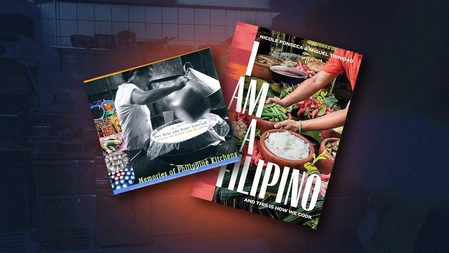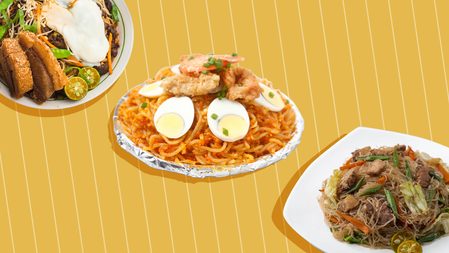After a sunny stroll, I had lunch with a group of Korean students. I asked one of them about her view on Filipino food. She said that Pinoy cuisine may be “masarap (delicious),” but collectively, it tends to be oily, fatty, and too sweet. In short, appetizing yet somewhat unhealthy.
After the short conversation, she got a spoonful of chopsuey because, according to her, vegetables are a much healthier fare.
The late Doreen Gamboa-Fernandez is known for her food criticism and teaching prowess. She is one of the pillars of Filipino food writing along with literary giants Gilda Cordero-Fernando and Clinton Palanca. Well-loved by her students in the Ateneo, the Queen of All Media Kris Aquino once sat in her writing class. Rumor has it that she is claimed to be Aquino’s favorite teacher, a hearsay I learned from a fellow teacher who eats showbiz news for breakfast.
Fernandez’s Palayok essay overviews how food symbolizes one’s cultural identity. As a melting pot, the Philippines is like a haluhalo, a sweet concoction made of shaved ice, milk, ube, random fruits, beans, and jellies. Often referred to as “halo-halo” and mistranslated by vloggers as “mix-mix,” this unofficial national dessert shares similarities in how Filipino cuisine is heavily influenced by a mixture of colonial influences adapted to the local palate.
The Chinese, despite not colonizing the Philippines, influenced Filipino cuisine. Pinoy comfort foods like lumpiang Shanghai and pancit Canton bear the names of places in China. If translated to English, they are addressed as “Filipino spring rolls” and “Filipino stir-fried noodles,” respectively. Notice how the modifiers specifying the Chinese places, when translated to English, are replaced with “Filipino.” Hence, this proves how we Filipinos made Chinese dishes as our own.
No Pinoy birthday is complete without pancit, a noodle dish that varies in ingredients based on a particular locality. Tracing its etymology to Hokkien’s “pian i sit,” which means “convenient food,” this dish is also a symbol of long life. However, such belief is challenged in most teleseryes as this pambansang pasalubong is a common prop for a trope that foreshadows one character is about to pass away.
Different places have their own spin on the much-loved pansit.
Pancit Malabon is topped with seafood because of its abundance in the city. Other equally flavorful pancit varieties one should not miss are pancit bato of Bicol (not to be confused that such dish never contained an actual rock), pancit batil patong of Cagayan, and pancit habhab of Quezon, among others.
With the influx of vloggers flocking to Binondo, colloquially known as the country’s Chinatown, numerous Chinoy foods are being reintroduced to today’s audience. This results in more Filipinos, and even foreigners, eager to try the real deal beyond the familiar pansit, siopao, or siomai.
Besides forced indoctrination Catholicism, Spanish friars brought their food, and that included the famed adobo, a dish usually consisting of meat, either pork or chicken, marinated with soy sauce and vinegar, combined with garlic, black peppercorn, and bay leaf. Some versions replace meat with seafood or vegetables.
Different from its Spanish, Puerto Rican, and Mexican counterparts, the Filipino adobo boasts other versions based on color, such as adobong pula (red), adobong puti (white), and adobong dilaw (yellow). Furthermore, each Filipino family has their own way of cooking adobo. Hence, there is no correct or prescriptive way to cook a dish based on kutob and tantiya of the recados (hunch and estimate of the amount of ingredients).
Although adobo is unofficially claimed to be the national dish, other Filipino foods like sinigang and lechon could steal its title as they are also well-loved by many. Other Fil-Hispanic foods enjoyed on every Filipino occasion, from birthdays to fiestas, are lengua, caldereta, chorizo, and of course, the succulent yet sinful roasted pig.
The Spanish are also known for their love of decadence, known as panghimagas. The variety of desserts probably caused a generation of Filipinos to develop a sweet tooth (and numerous trips to the dentist) and, of course, “jabetis.” Blame them for introducing leche flan, yema, and Brazo de Mercedes to our diet.
Diaspora cuisine
The so-called “friends, partners, allies” Americans not only changed the country’s educational system but also wired Filipino brains the love for all things canned and fried. Besides their agenda to push the hegemonized English language over our mother tongue as a medium of instruction, Filipinos are somewhat brainwashed that anything American is always superior to others, including one’s own. Hence, colonial mentality is long ingrained in our identity as Filipinos.
Americans introduced fast-food and child obesity, too, to the islands. Besides Jesus Christ, I assume every Filipino kid can recognize a clown and a bee as mascots of the rival joints. Jollibee (not sponsored, unfortunately) is the nation’s response to localizing American fast-food joints. If the American South enjoys fried chicken as soul food, Chicken Joy is probably the Philippine equivalent. Just replace waffles and maple syrup with rice and gravy!
If Americans take pride in their apple pies, often a Thanksgiving staple, Filipinos enjoy a whole buko pie, often bought as a pasalubong and shared with family and friends. The young coconut, an endemic fruit known for its multiple uses and benefits, is the key ingredient to the said delicacy. A known fast-food giant in the Philippines sells other versions of pies besides buko pie (the appearance is more of a sweet hot pocket than a usual slice of pie) like ube cheese pie, ube macapuno pie, and the notable peach mango pie.
In the diaspora, more and more multi-hyphenated Filipinos opened Pinoy restaurants to cater to balikbayans and locals. Ube is now enjoying the international limelight, much as how matcha from Japan is now a fixture in most coffee shops and dessert spots in the Philippines. With the attraction of Pinoy cuisine to the world stage, a Michelin star might be possible sooner or later.
Go outside and look at what most food stands sell. Siomai is Chinese. Shawarma is Middle Eastern. Takoyaki is Japanese. Tteokbokki is Korean. Despite some claims that such food sold in our streets is not authentic, this proves how Pinoys, with their entrepreneurial mindset, can suit international food to the Pinoy tongue. Likewise, more and more restaurants now offer international fare. However, Filipino food from marginalized sectors needs to be celebrated as well.
The number of content creators sharing Pinoy food as content is indeed growing. Viewership is capitalized. Notice how the humble pares by Diwata is being milked by some content creators to the point of being overhyped. As much as we want to support Pinoy food, viewers should also be media literate and mindful of online reviews.
The Philippines is more than just Chicken Joy or adobo. Start by avoiding having a myopic view of food. Take pride (or even dare to eat) balut or tamilok even once in your lifetime. Stay curious. Embrace multiculturalism. Always be hungry. – Rappler.com
Patrick Ernest Celso is a faculty member under the Department of Filipino at De La Salle University, Manila, and the Department of Literature at University of Santo Tomas. He is taking PhD in Philippine Studies-Language, Culture, and Media, at DLSU. He likes to take photos of food before eating.
GRAMMYS 2024: WHEN AND HOW TO WATCH AS TAYLOR SWIFT IS SET TO BREAK RECORDS!
This article was first published here

































.jpg?fit=around%7C1080:1080&output-quality=90&crop=1080:1080;center,top&w=100&resize=100,100&ssl=1)








.jpg?fit=around%7C1080:1080&output-quality=90&crop=1080:1080;center,top&w=600&resize=600,337&ssl=1)


